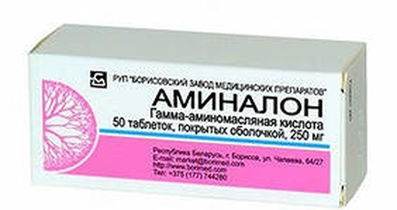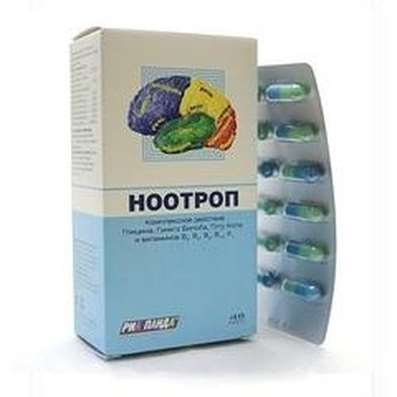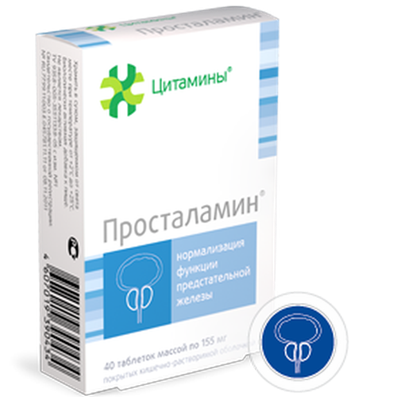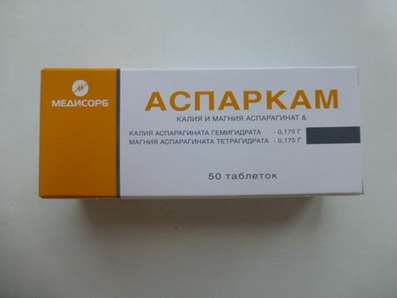Instruction for use: Ladybon
I want this, give me price
Active substance Tibolone
ATX code G03CX01 Tibolone
Pharmacological groups
Estrogens, gestagens; Their homologues and antagonists
Nosological classification (ICD-10)
M81.0 Postmenopausal osteoporosis
Menopause osteoporosis, Osteoporosis in menopause, Osteoporosis in menopause, Osteoporosis in postmenopausal women, Osteoporosis in the postmenopausal period, Postmenopausal osteoporosis, Osteoporosis in postmenopausal women, Perimenopausal osteoporosis, Postmenopausal osteoporosis, Post-menopausal osteoporosis, Postmenopausal osteoporosis, Postmenopausal demineralization of bones, Osteoporosis with estrogen deficiency, Osteoporosis in postmenopausal women, Osteoporosis in postmenopausal women and after hysterectomy
N95.1 menopausal and menopausal status of women
Atrophy of the mucosa of the lower genital tract, caused by estrogen deficiency; Vaginal dryness; Autonomic dysfunction in women; gipoestrogeniya state; Deficiency of estrogen in menopausal women; Degenerative changes of the mucous membrane in the menopause; Natural menopause; an intact uterus; climacteric; Menopause women; Menopause in women; menopausal depression; Climacteric ovarian dysfunction; Menopause; Climacteric neurosis; Menopause; Menopausal symptoms complicated psychovegetative; Climacteric syndrome; Climacteric vegetative disorders; Climacteric psychosomatic disorder; menopausal disorders; Menopausal disorders in women; menopausal condition; Climacteric vascular disorders; Menopause; Menopausal vasomotor symptoms; menopausal period; Lack of estrogen; Feeling the heat; Pathological menopause; perimenopause; menopause; postmenopausal; Premature menopause; premenopauznom period; tides; hot flashes; flushing in the Meno and postmenopausal; Hot flashes / hot flashes in menopause; Heart attack during menopause; Early menopause in women; Disorders of menopause; climacteric syndrome; Vascular complications of menopause; Physiological menopause; Estrogendefitsitnye state; premature Menopause
Composition
Tablets 1 table.
active substance:
Tibolone 2.5 mg
Auxiliary substances: lactose monohydrate (micronized) - 12.5 mg; Lactose monohydrate (lactose of direct compression) - 74.5 mg; Potato starch - 9.5 mg; Ascorbyl palmitate - 0.5 mg; Magnesium stearate - 0.5 mg
Description of dosage form
From white to almost white, flat, round tablets, engraved "e" on one side.
pharmachologic effect
The pharmacological action is estrogenic.
Pharmacodynamics
When administered orally, tibolone is rapidly metabolized to form 3 compounds that determine the pharmacodynamic characteristics of the Ladybon® preparation. Two metabolites of tibolone (3α-hydroxytybolone and 3β-hydroxytibolone) have estrogen-like activity, while the third metabolite, δ4-isomer of tibolone, has gestagen-like and androgen-like activity.
Ladybon® replenishes estrogen deficiency in postmenopausal women, alleviating the symptoms associated with their deficiency, such as vasomotor disorders (hot flashes, increased sweating at night), irritability, dryness and discomfort in the vagina, decreased mood and libido). Ladybon® prevents bone loss after menopause or removal of the ovaries.
Pharmacokinetics
After oral administration, tibolone is rapidly absorbed. As a result of rapid metabolism, tibolone concentrations in the plasma are very low. Cmax in the plasma of metabolites of 3α-hydroxybutylone and 3β-hydroxytibolone is higher, but cumulation does not occur. The concentration of the δ4 isomer in the plasma is very low. Therefore, a number of pharmacokinetic parameters can not be determined.
The excretion of tibolone occurs in the form of conjugated metabolites (mainly sulfated metabolites). Part of the drug is excreted by the kidneys, most of it is excreted through the intestine. Eating does not have noticeable effects on the degree of absorption. The pharmacokinetic parameters of tibolone and its metabolites do not depend on the function of the kidneys.
Indications
Treatment of symptoms of estrogen deficiency in postmenopausal women;
Prevention of osteoporosis in postmenopausal women with a high risk of fracture and with intolerance to other groups of drugs used to prevent osteoporosis.
Contraindications
Established hypersensitivity to the active substance or any auxiliary substance of the drug;
Period less than a year after the last menstruation;
Diagnosed (including in the anamnesis) breast cancer or suspicion of it;
Diagnosed (including in the anamnesis) malignant estrogen-dependent tumors (for example, endometrial cancer) or suspicion of them;
Bleeding from the vagina of an unclear etiology;
Untreated endometrial hyperplasia;
Thrombosis (venous or arterial) and thromboembolism now or in anamnesis (including thrombosis and deep vein thrombophlebitis, pulmonary embolism, myocardial infarction, ischemic or hemorrhagic cerebrovascular disorders);
Diagnosed thrombophilic conditions (eg deficiency of protein C, protein S or antithrombin III) (see "Special instructions");
The conditions preceding thrombosis (including transient ischemic attacks, angina pectoris), now or in the anamnesis;
Expressed or multiple risk factors for venous or arterial thrombosis (including atrial fibrillation, complicated heart valve disease and subacute bacterial endocarditis, uncontrolled arterial hypertension, extensive surgery accompanied by prolonged immobilization, extensive trauma, obesity (body mass index> 30 kg / m2), smoking is older than 35 years);
Cardiovascular failure in the stage of decompensation;
Acute liver disease or liver disease in an anamnesis, after which the liver function indicators did not return to normal;
liver failure;
Malignant or benign liver tumors (including liver adenoma) at present or in the anamnesis;
Porphyria;
Otosclerosis, which occurred during the previous pregnancy or when using hormonal contraceptive drugs in history;
Rare hereditary diseases: intolerance to galactose, deficiency of lactase Lappa or glucose-galactose malabsorption;
pregnancy;
The period of breastfeeding.
Carefully
If any of the conditions / diseases listed below are present, previously observed and / or worsened during pregnancy or previous hormone therapy, the patient should be under close medical supervision. Such conditions / diseases include:
Leiomyoma (uterine fibroids) and / or endometriosis;
Cardiovascular failure without signs of decompensation;
The presence of risk factors for estrogen-dependent tumors (for example, the presence of breast cancer in immediate relatives (mother, sisters);
Controlled arterial hypertension;
Increasing the concentration of cholesterol in the blood;
Disorders of carbohydrate metabolism, diabetes mellitus both in the presence and in the absence of complications;
cholelithiasis;
Migraine or severe headache;
Systemic lupus erythematosus;
Endometrial hyperplasia in the anamnesis;
epilepsy;
bronchial asthma;
Kidney failure;
Otosclerosis, not associated with pregnancy or previous use of hormonal contraceptives.
It should be taken into account that these conditions / diseases can recur or worsen during treatment with tibolone.
pregnancy and lactation
The use of Ladybon® during pregnancy and breastfeeding is contraindicated. If pregnancy occurs, treatment with Ladybon® should be stopped immediately.
Side effects
This section describes the adverse effects that were recorded in 21 placebo-controlled studies (including the study "Evaluation of the effect of tibolone on the incidence of new vertebral fractures in postmenopausal women with osteoporosis" ([Long Term Intervention on Fractures with Tibolone (LIFT) Involving 4079 women receiving therapeutic doses (1.25 or 2.5 mg) of tibolone, and 3,476 women receiving placebo.The duration of treatment in these studies ranged from 2 months to 4.5 years.
Most side effects were mild. The number of cases of cervical pathology (cervical cancer) did not increase when taking Ladybon® as compared with placebo.
Other possible side effects may be (frequency not established):
- dizziness, headache, migraine;
- Depression;
- skin rashes, skin itching, seborrheic dermatitis;
- visual impairment (including blurred vision);
- gastrointestinal disorders (diarrhea, flatulence);
- fluid retention in the body, peripheral edema;
- pain in the joints and muscles;
- violations of the liver (including increased activity of transaminases).
Risk of developing breast cancer
In women receiving combination therapy (estrogen / progestogen) for more than 5 years, there has been a two-fold increase in the incidence of breast cancer diagnosis. Any increased risk in patients receiving only estrogen or tibolone is significantly lower than the risk observed in patients receiving combination therapy (estrogen / progestogen) drugs.
The level of risk depends on the duration of the application.
Risk of developing endometrial cancer
The highest risk of developing endometrial cancer was observed in a randomized placebo-controlled study that included women who were not initially examined for endometrial pathology, so the design of the study was close to the clinical practice (LIFT study, mean age 68 years). In this study, there were no cases of endometrial cancer diagnosed in the placebo group (n = 1773) after observation for 2.9 years, compared with 4 cases of endometrial cancer in the tibolone group (n = 1746), which corresponds to diagnosis 0, 8 additional cases of endometrial cancer per 1000 women who received tibolone for 1 year in this study (see "Special instructions").
The risk of developing ischemic stroke
The relative risk of developing ischemic stroke does not depend on the age or duration of the drug, but the absolute risk depends heavily on age. The general risk of developing ischemic stroke in women taking tibolone will increase with age (see "Special instructions").
A randomized controlled trial for 2.9 years established a 2.2-fold increase in the risk of stroke in women (mean age 68 years) taking 1.25 mg of tibolone (28/2249), compared with the placebo group (13/2257) . The majority (80%) of strokes were ischemic.
The absolute risk of stroke depends on age. Thus, the absolute risk for a period of 5 years is 3 cases per 1000 women aged 50-59 years and 11 cases per 1000 women aged 60-69 years.
For women taking tibolone for 5 years, it is possible to predict about 4 additional cases per 1000 patients aged 50-59 years and 13 additional cases per 1000 patients aged 60-69 years.
Other undesirable phenomena associated with the use of drugs for HRT (estrogen-containing drugs, combined (estrogen / progestogen) drugs, tibolone) have been noted. The continued use of drugs for estrogen-only HRT and combined (estrogen / gestagen) drugs was associated with a slight increase in the risk of ovarian cancer. According to the "Million Women Study", HRT for 5 years resulted in 1 additional case of cancer for 2500 patients. This study showed that the relative risk of ovarian cancer when taking tibolone is similar to that in other HRT medications. Reception of tibolone is associated with an increase in the relative risk of VTE development, i.e. Thrombosis of deep veins and thromboembolism of the pulmonary artery, in 1,3-3 times. This phenomenon often occurs during the first year of use (see "Special instructions").
- There is a slight increase in the risk of developing coronary artery disease (coronary heart disease) in patients older than 60 years who receive HRT combined (estrogen / gestagen) drugs. There is no reason to believe that the risk of myocardial infarction when taking tibolone is different from that of other types of HRT.
- Increased blood pressure (blood pressure).
- Pancreatitis.
- Diseases of the gallbladder (cholelithiasis, cholecystitis).
- Skin diseases: chloasma, erythema multiforme, erythema nodosum, vascular purpura.
- Dementia at the onset of therapy over the age of 65 (see "Special instructions").
Interaction
Tibolon increases the fibrinolytic activity of the blood, which can lead to an increase in the anticoagulant effect of anticoagulants, in particular warfarin, so the dose of warfarin should be appropriately adjusted by INR. The simultaneous use of tibolone and anticoagulants should be monitored, especially at the beginning and at the end of treatment with Ladybon®. There is only limited information on the pharmacokinetic interaction in the treatment with tibolone.
The in vivo study demonstrated that combined use with tibolone to a small extent affects the pharmacokinetics of the substrate of cytochrome P450 3A4 midazolam.
On this basis, the presence of drug interaction with other substrates of CYP3A4 is possible. CYP3A4 medication induction, such as barbiturates, carbamazepine, hydantoins and rifampicin, can increase the metabolism of tibolone and thus affect its therapeutic effect. Drugs containing St. John's wort (Hypericum perforatum) can enhance the metabolism of estrogens and progestins by inducing the isoenzyme CYP3A4. Elevated metabolism of estrogens and progestins can lead to a decrease in their clinical effect and a change in the profile of uterine bleeding.
Dosing and Administration
Inside. Tablets should be swallowed by washing with water, preferably at the same time of day.
The drug Ladybon® should be taken after 12 months after the last natural menstruation. If the drug Ladybin ® start taking before the specified time, then the probability of irregular bloody discharge / bleeding from the vagina increases. Before starting the Ladybon® preparation, it is necessary to exclude malignant neoplasms of the reproductive system organs, regardless of whether the woman is taking another hormone replacement therapy (HRT) or not, especially if bleeding from the genital tract occurs.
The dose of the drug is 1 table / day.
Correction of dose with age is not required.
Blisters with the medicine Ladybon® are marked with the days of the week. You should start taking the medication with the pill, which is marked on the current day. For example, if the day of reception coincides with Monday, you must take a pill, marked on Monday, from the top of the blister. Next, take the pill according to the days of the week. Of the next blister pills are taken without missing and breaks. Do not allow admission to the drug when changing blisters or packages.
When treatment with Ladybon ®, there is no need to add gestagen-containing drugs.
If you missed the next pill, the next tactic depends on the time of late scheduled appointment. If less than 12 hours pass from the moment the tablet is missed, it is necessary to take the missed tablet as soon as possible. If the delay in taking the tablets is more than 12 hours, you should skip the reception and take the next pill at the usual time.
It is not recommended to take 2 tablets. Simultaneously to replenish the missed dose.
Transition from a cyclic or continuous regimen of the drug for HRT to tibolone
When switching from a cyclical regimen for HRT, treatment with Ladybon® should be started the day after the completion of the previous treatment regimen. In case of switching from a continuous mode of taking a combined drug for HRT, treatment can be started at any time.
Overdose
Symptoms: a feeling of malaise, nausea, vaginal bleeding.
Treatment: symptomatic.
When taking a large number of Ladybon® tablets, you should consult your doctor.
special instructions
Ladybon® is not intended to be used as a contraceptive and does not protect against unwanted pregnancy. The decision to start taking Ladybon® should be based on an assessment of the benefit / risk ratio taking into account all individual risk factors, and in women older than 60, the risk of developing strokes should also be taken into account.
For the treatment of postmenopausal symptoms, Ladybon® should only be prescribed for symptoms that adversely affect the quality of life. In all cases, it is necessary at least once a year to carefully evaluate the risk and benefits of therapy and continue therapy with Ladybon ® only at a time when the benefits of therapy exceed the risk. It is necessary to carefully evaluate the risk of stroke, the risk of developing breast cancer and endometrial cancer in every woman with an intact uterus (see "Side effects"), considering all individual risk factors, incidence and specificity of both cancers and stroke in terms of healing, Morbidity and mortality.
Evidence of the relative risk associated with HRT or the use of tibolone for the treatment of premature menopause is limited. However, the benefit / risk ratio in women with premature menopause may be more favorable than in older women, due to the low absolute risk level in younger women.
Medical examination / observation. Before initiating or resuming therapy with Ladybon®, individual and family medical history should be collected.
Physical examination (including examination of pelvic organs and mammary glands) should be performed taking into account the history, absolute and relative contraindications. During therapy recommended preventive repeated examinations, the frequency and nature of which are determined by the individual characteristics of the patient, but at least 1 time in 6 months. In particular, a woman should be informed about the need to inform the doctor about changes in the mammary glands.
Surveys, including appropriate imaging techniques, such as mammography, should be carried out in accordance with the current survey scheme, adapted to the clinical needs of each patient, but at least once every 6 months.
Reasons for immediate discontinuation of therapy and immediate medical attention
Therapy should be discontinued in the event of a contraindication and / or the following conditions / diseases:
- jaundice or worsening of liver function;
- a sudden increase in blood pressure (arterial pressure), which differs from the usual BP indices typical for the patient;
- the onset of a migraine headache.
Hyperplasia and endometrial cancer. Data from randomized controlled clinical trials are inconsistent, but observational studies have shown an increased risk of developing hyperplasia or endometrial cancer in women taking tibolone (see also "Side effects"). These studies have shown that the risk of developing endometrial cancer increases with increasing duration of the drug. Tibolon can increase the thickness of the endometrium, measured by transvaginal ultrasound (ultrasound).
During the first months of treatment, breakthrough bleeding and spotting can occur.
When bloody discharge / bleeding occurs against the background of the use of Ladybon®, which
- continue more than 6 months from the beginning of the drug;
- begin 6 months after the start of Ladybon® and continue even after the patient has stopped using Ladybon®, you need to see a doctor - this may be a sign of endometrial hyperplasia.
Mammary cancer. Data from different clinical studies from the point of view of evidence-based medicine regarding the risk of developing breast cancer when taking tibolone are controversial, and further research is required.
Cancer of the ovaries. Ovarian cancer is much less common than breast cancer. Long-term (at least 5-10 years) estrogen replacement monotherapy was associated with a slight increase in the risk of ovarian cancer.
Some studies, including the Women's Health Initiative (WHI) study, show that long-term combination therapy for HRT may have a similar or slightly lower risk.
In the "Study of a million women" it was shown that the relative risk of developing ovarian cancer with tibolone was similar to the risk associated with the use of other types of HRT.
VTE (venous thromboembolism). Preparations for HRT containing only estrogens or combination preparations containing estrogen and progestogen may increase the risk of VTE (ie, deep vein thrombosis or pulmonary embolism) 1.3-3 times, especially during the first year of use (See "Side effects").
According to an epidemiological study using UK databases, the risk of developing VTE associated with taking tibolone was lower than the risk associated with conventional HRT drugs, but due to the fact that at that time only a small proportion of women were taking tibolone, Can not exclude a slight increase in risk compared with women who did not take tibolone. Patients with known thrombophilic conditions have an increased risk of developing VTE, and taking tibolone may increase this risk, so the use of the drug by this population of patients is contraindicated (see "Contraindications").
Risk factors for VTE are estrogen use, advanced age, extensive surgery, prolonged immobilization, obesity (body mass index> 30 kg / m2), pregnancy and the postpartum period, systemic lupus erythematosus and cancer. Patients after surgical interventions should pay special attention to preventive measures to prevent VTE in the postoperative period. If it is necessary to continue immobilization after the operation, a temporary discontinuation of taking Ladybon® medication for 4-6 weeks before the operation is recommended. Treatment should not be resumed until the woman's motor activity is restored. Women who do not have a history of VTE, but who have relatives of the first degree of kinship who have a history of thrombosis at a young age, can be offered screening (should inform the woman that screening reveals only a part of thrombophilic conditions). If a thrombophilic condition is found that is isolated from a family member's thrombosis, or a serious disorder (eg, deficiency of antithrombin III, protein S, protein C or a combination of disorders), Ladybon® is contraindicated.
For women who are already receiving anticoagulant treatment, careful consideration of the benefit / risk ratio of HRT or tibolone is required.
If VTE develops after the beginning of treatment, the drug should be stopped. Patients should be informed of the need to seek immediate medical attention if symptoms of potential thromboembolism (eg, pain and unilateral swelling of the lower limb, sudden chest pain, shortness of breath) appear.
IHD. In randomized controlled trials, evidence of protection against myocardial infarction was not obtained in women with or without CHD who received HRT with combined preparations (estrogen / progestogen) or preparations containing only estrogen.
In epidemiological studies using the GPRD database, there was no evidence of protection against myocardial infarction in postmenopausal women who received tibolone.
Ischemic stroke. Therapy with tibolone increases the risk of ischemic stroke from the first year of use (see "Side effects"). Absolute risk of stroke depends strictly on age, and consequently this effect of tibolone is greater, the greater the age. If there are unexplained migraine headaches with or without vision impairment, you should contact your doctor as soon as possible. In this case, you can not take the drug until the doctor confirms the safety of continuation of HRT, since such headaches can be an early diagnostic sign of a possible stroke.
Other states
- According to available data, the administration of tibolone resulted in a significant dose-dependent reduction in HDL cholesterol (from -16.7% at a dose of 1.25 mg to -21.8% at a dose of 2.5 mg after 2 years of use).
- The total concentration of triglycerides and VLDL was also decreased. The decrease in the concentration of total cholesterol and VLDL cholesterol was not dose-dependent.
- Concentrations of LDL cholesterol remained unchanged. The clinical significance of these data is still unknown.
- Women with already existing hypertriglyceridemia should be under close supervision of the doctor while taking Ladybon®, The rare cases of a significant increase in the concentration of triglycerides in the blood plasma, promoting the development of pancreatitis, were noted during estrogen therapy in this condition.
- Treatment with tibolone leads to a very small decrease in thyroxine-binding globulin and total T4. The concentration of total T3 does not change. Ladybon® lowers the concentration of globulin binding the sex hormones, while the levels of corticosteroid-binding globulin and circulating cortisol do not change.
- The increased risk of developing dementia in the case of initiation of therapy with tibolone in women over the age of 65 should be considered.
- Against the background of taking Ladybon ® there is a possibility of fluid retention. In this regard, careful monitoring of patients with cardiac or renal insufficiency is necessary.
Impact on the ability to manage vehicles and mechanisms. No negative effect of the drug on concentration of attention and reaction, ability to drive vehicles and other mechanisms was noted.
Form of issue
Tablets, 2.5 mg. On 28 tab. In a blister of PVC / PVDC / aluminum. By 1 or 3 bl. Are placed in a cardboard box.
Terms of leave from pharmacies
On prescription.
Storage conditions
At temperatures not higher than 25 ° C, in the original packaging.
Keep out of the reach of children.
Shelf life
2 years.
Do not use after the expiry date printed on the package.

 Cart
Cart





